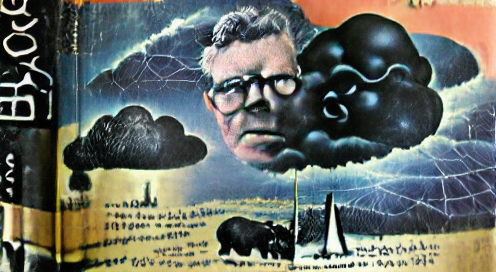
The Black Cloud blends true science with grandiose imagination. With less of the classic science fiction scent found in works by the likes of Asimov, Clarke, or Dick, its setting brings to mind Doyle’s Sherlock or Agatha’s Poirot - contemplative, strange, and outlandish - sparring with outer space omniscients. Sherlock being an unfavourable character for his brash logical expositions seems to be the channel through which the main character, Chris Kingsley, portrays his opinions about politics and the general populace of Earth. In the story, characters enjoy fireplace debates dominated largely by Kingsley’s output, akin to the interogations by Poirot or Sherlock. This atmosphere provides a factor of reality to the entire plot, making the events more believable to fellow Eathlings. For those who enjoy scientific stringency, the stages through which the characters progress their knowledge and understanding of the situation is mathematically and physically justified. Various characters literally perform calculations of which Haley presents as if the writing were a scientific paper. Depsite the concept of a sentient cloud being an intransigent idea to many, the author manages to balance the mythical with the logical, vividly outlining the battering of the Earth during its foray with the undefiable cloud. If such clouds were to exist and harvest our Sun’s energy, The Black Cloud would provide an infallible description of the fate we would be granted.
It is worth reading The Black Cloud merely for Kingsley’s prediction of the clouds cognitive underpinnings, which start about two-thirds of the way through the book. Personally, these inspire in me thoughts and ideas about information processing, distributed intelligence, and complex systems. The common mantra that a sample-size of one planet with life is a poor example of what life we will find elsewhere rings true during Hoyle’s description of the Cloud. This black beast is a dense gas of which a protective membrane has formed around it, forcing chaotic richness to ensue. Communication between parts happens via electromagnetic radiation, with ice particles seeding the growth of complex structures that fascilitate this communication. The blood of this beast is an alternating current producing electromagnetic waves to fuel parts of the cloud. This concept is far from implausible, and it is clear that Hoyle was probably inspired by the beautiful and intricate structures of nebula which themselves seem to almost breath and grow. My own research is inspired by how heterogeneous systems of relatively random behaviour can process information. Hoyle’s story of the Cloud is a perfect translation of how I see that intelligence and information can develop within our Universe. The tale of The Black Cloud will cast inspiration over much of my future work.
The graphic at the top of this post: “The Book The Black Cloud By Fred Hoyle” via VQGAN+CLIP.